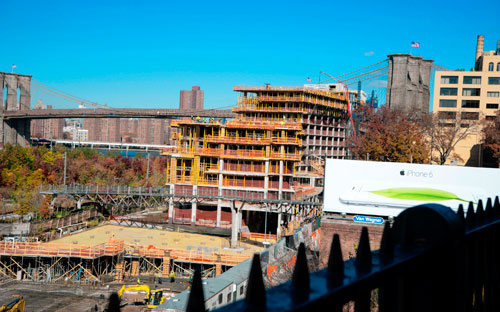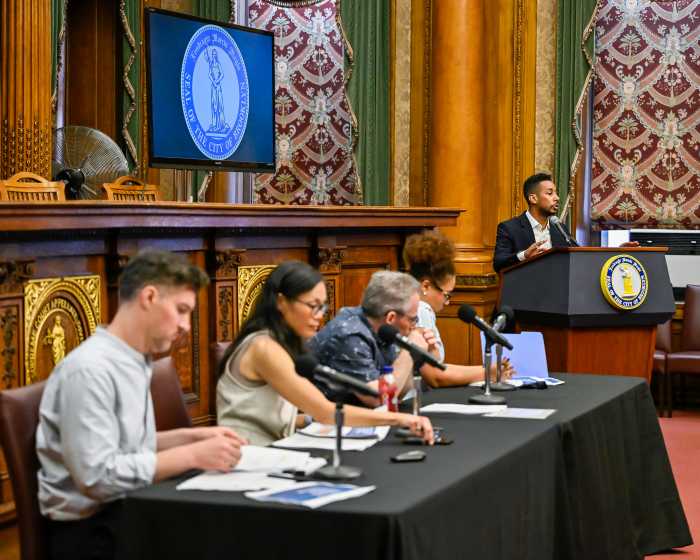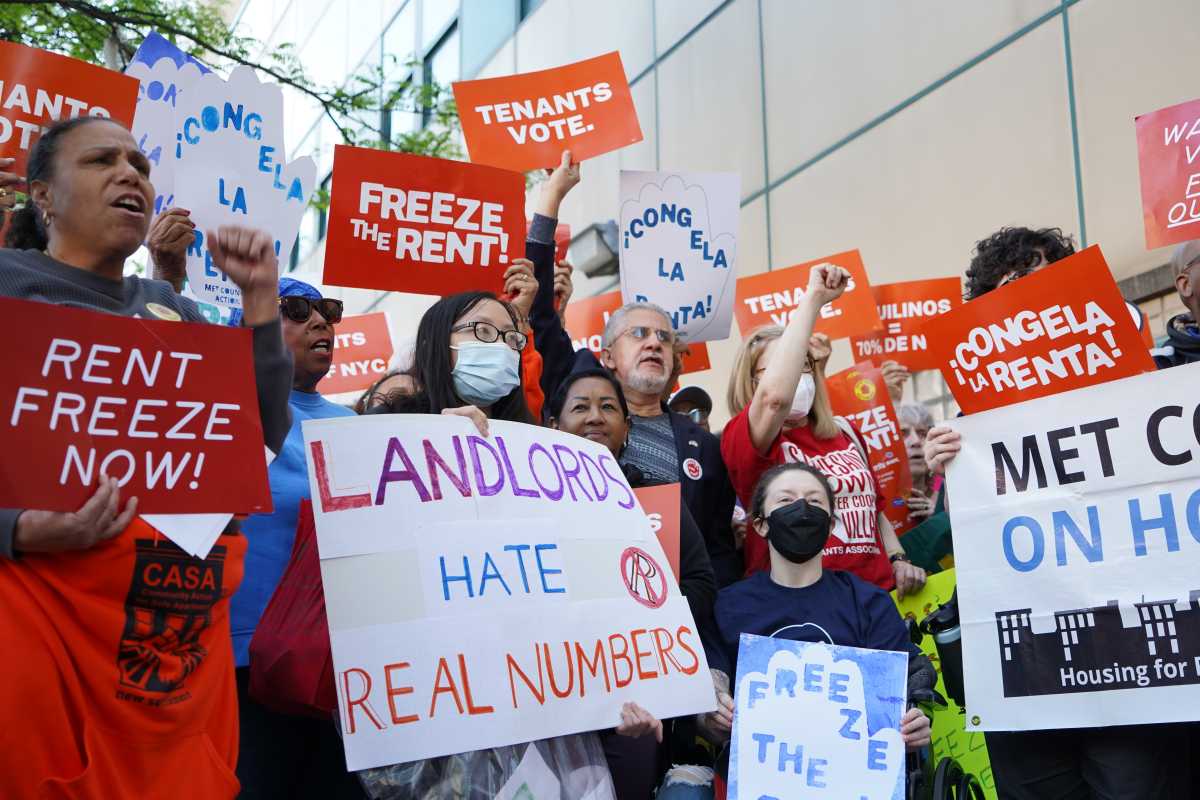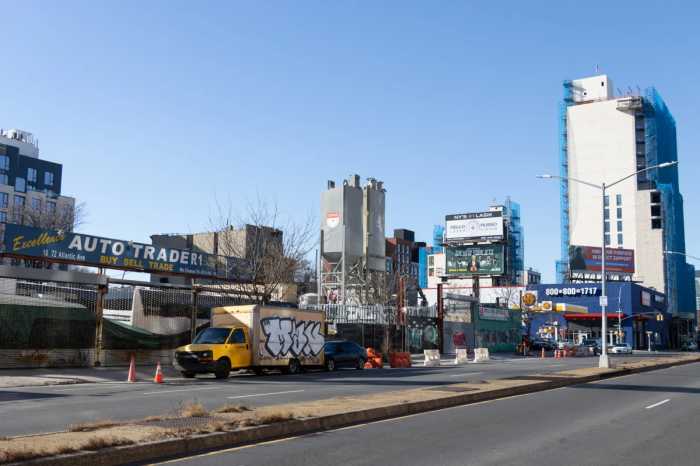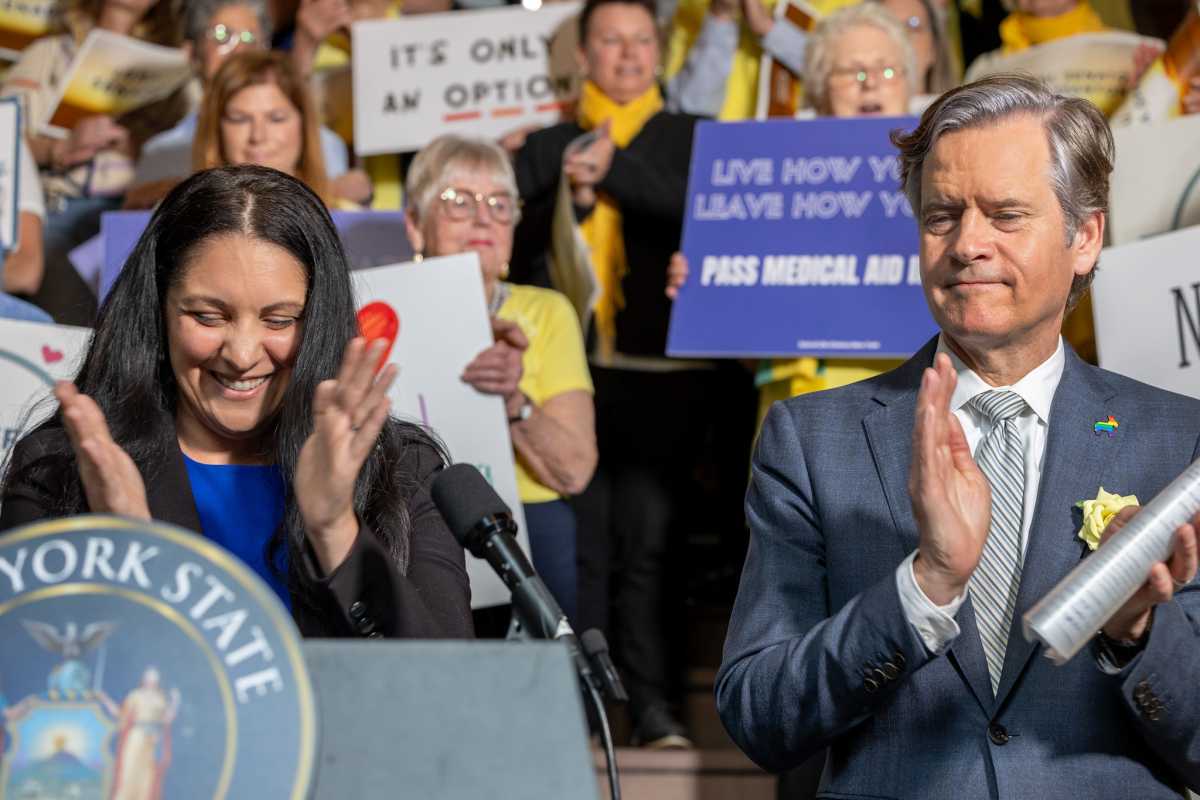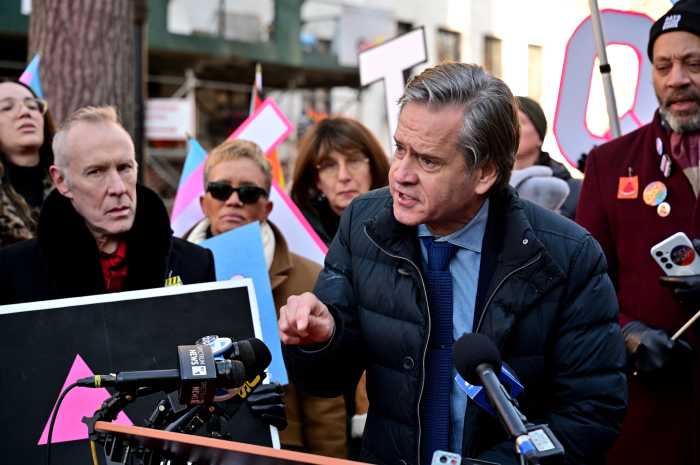The ventilation machinery and planned bar on the roof of a new hotel in Brooklyn Bridge Park will block the beloved view from the Brooklyn Heights Promenade, in violation of an agreement to keep it pristine, a civic group argues.
The influential Brooklyn Heights Association says the 30-foot bulkhead and under-construction saloon atop the Furman Street structure are clear violations of an eight-year-old agreement to keep the building under the overlook. The civic group griped about the blight on the view in a letter to the Brooklyn Bridge Park Corporation last month, demanding and explanation and a remedy.
“We feel strongly that the primary responsibility for ensuring that the views the community fought hard to protect was, and remains, the primary responsibility of the BBPC and its predecessors,” wrote Alexandra Bowie, president of the 104-year-old community group.
The agreement brokered by the Heights Association in 2006 is affirmed in the park’s General Project Plan, which describes the hotel, now called Pierhouse, as being approximately 100-feet tall. The building now exceeds that limit by approximately 30 feet because of the rooftop equipment and pub, to the chagrin of the Association, members of which love gazing out onto the Brooklyn Bridge and the skyline of the distant island of Manhattan.
“The bulkheads now rise high enough to block the view of stays and cables as well as the view of the Chrysler Building,” says a statement posted on the group’s website. “Our board and public are angered that the new buildings have seriously compromised that iconic, world class view.”
The group also points to a response to a public comment in the park’s Final Environmental Impact Statement that specifically pledges to keep the rooftop utilities out of sight.
“Any required parapet and mechanical equipment would be included in the proposed building envelope,” the document says, though it is unclear who from the city, state, or the park’s private administration penned the pledge.
As for the bar, in its letter to park administrators the Heights Association asked if removing it could shave feet off the top of the building, especially if it meant the elevator would not have to reach the roof.
The Brooklyn Bridge Park Corporation isn’t budging. It insists that the bar was always part of the plan, and that it has to have an elevator to the roof to be Americans with Disabilities Act compliant.
“The rooftop of the hotel will include an outdoor bar. An occupiable rooftop is a key component of the hotel program and has been part of the developer’s proposal from the outset,” park president Regina Myer wrote.
Park honchos also maintain that the height limit does not include the bulkhead, and that neighborhood activists knew that all along.
“It was made clear that BBP, based on consultation with Empire State Development Corporation, would permit rooftop mechanical equipment to exceed the 100-foot height limit provided that it fit the definition of a ‘Permitted Obstruction’ in the NYC Zoning resolution,” Myer wrote in response to the community group’s letter.
Myer points to a letter the Heights Association wrote in 2011 “explicitly acknowledging [the bulkhead being exempted from the height limit], with no mention of any previous agreements made with the BHA.”
“It is our understanding that one of the requirements of the RFP was that no scheme may penetrate the Scenic View plane or be higher than 100 feet exclusive of mechanical equipment,” wrote then-Heights-Association-president Jane McGroarty and then-parks-committee-chairman Donald Fraser.
Executive director Judy Stanton said that no matter what her organization said after the environmental impact statement was drawn up, the document is what should be regulating development in Brooklyn’s front yard.
“The spirit and language of the FEIS was very clear in its intent to preserve the view of the Brooklyn Bridge from midway along the Promenade,” Stanton said. “Nothing the BHA has ever said or done during the period between the FEIS and today should be misunderstood or construed as undermining that intent to preserve or even improve on that view that existed prior to the Pierhouse.”
A member of Stanton’s group summed up its stance this way in a 2005 reaction to the original environmental study:
“Please remember, there are views and then there are views,” Otis Pearsall wrote. “This is one of the world’s best. Let’s not nibble at it.”A Brooklyn College professor who writes about development said he is not sure what legal weight the final impact statement holds, but added that the real issue is the money and will to battle the deep-pocketed Brooklyn Bridge Park Corporation in court.
“My experience has been that what matters is how much money and clout you have to make your case,” Jerome Krase said. “To some degree the legality becomes inventive.”


